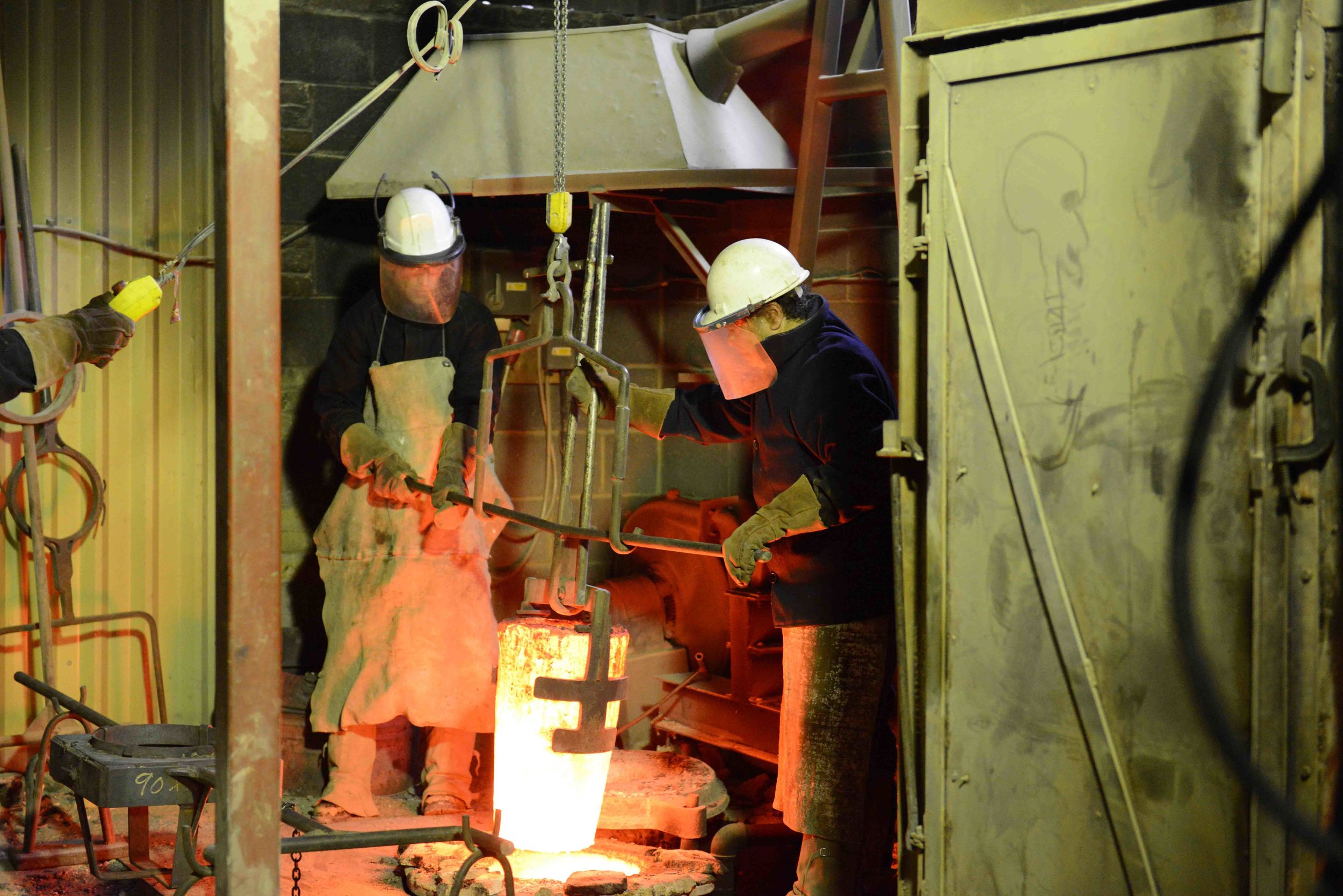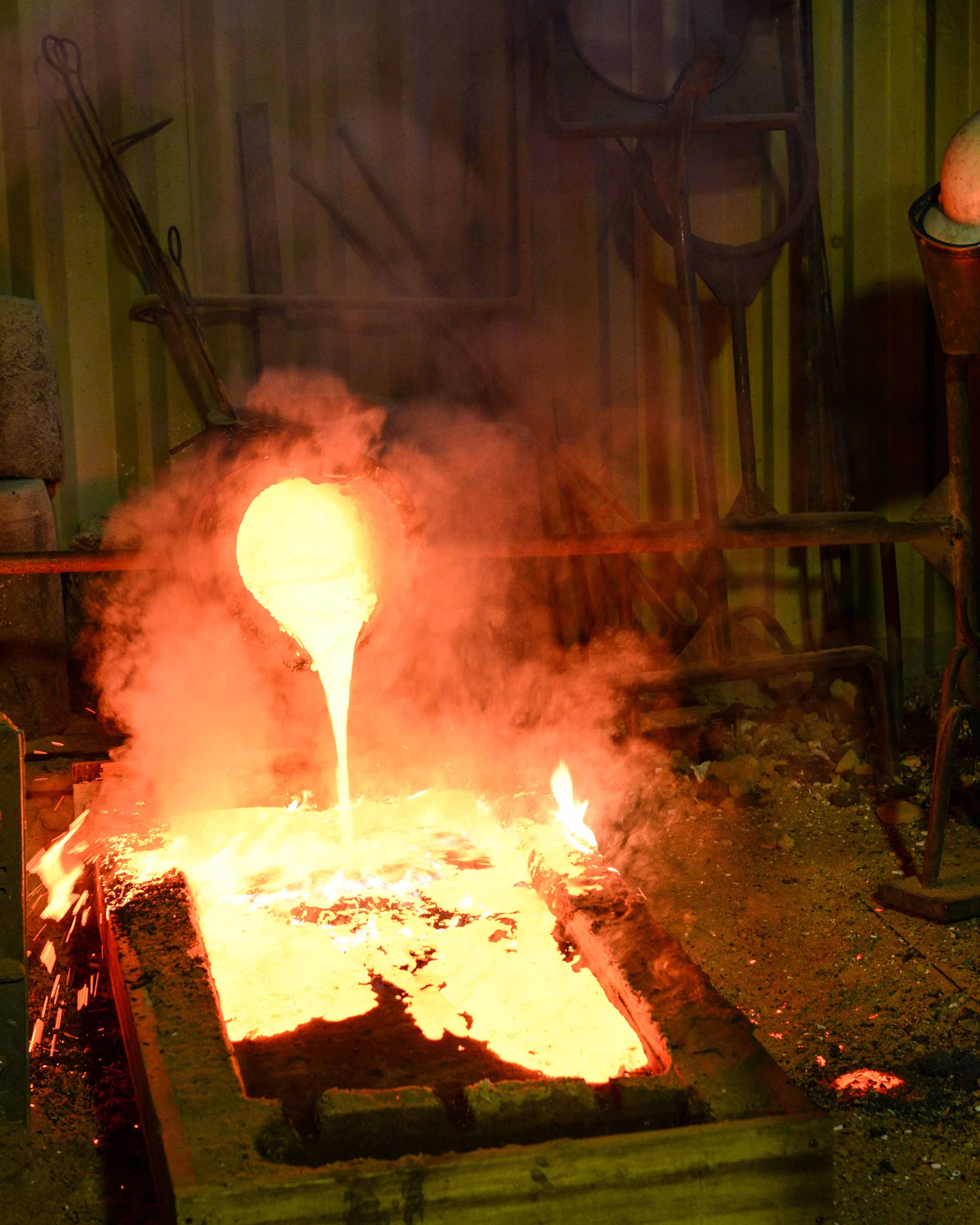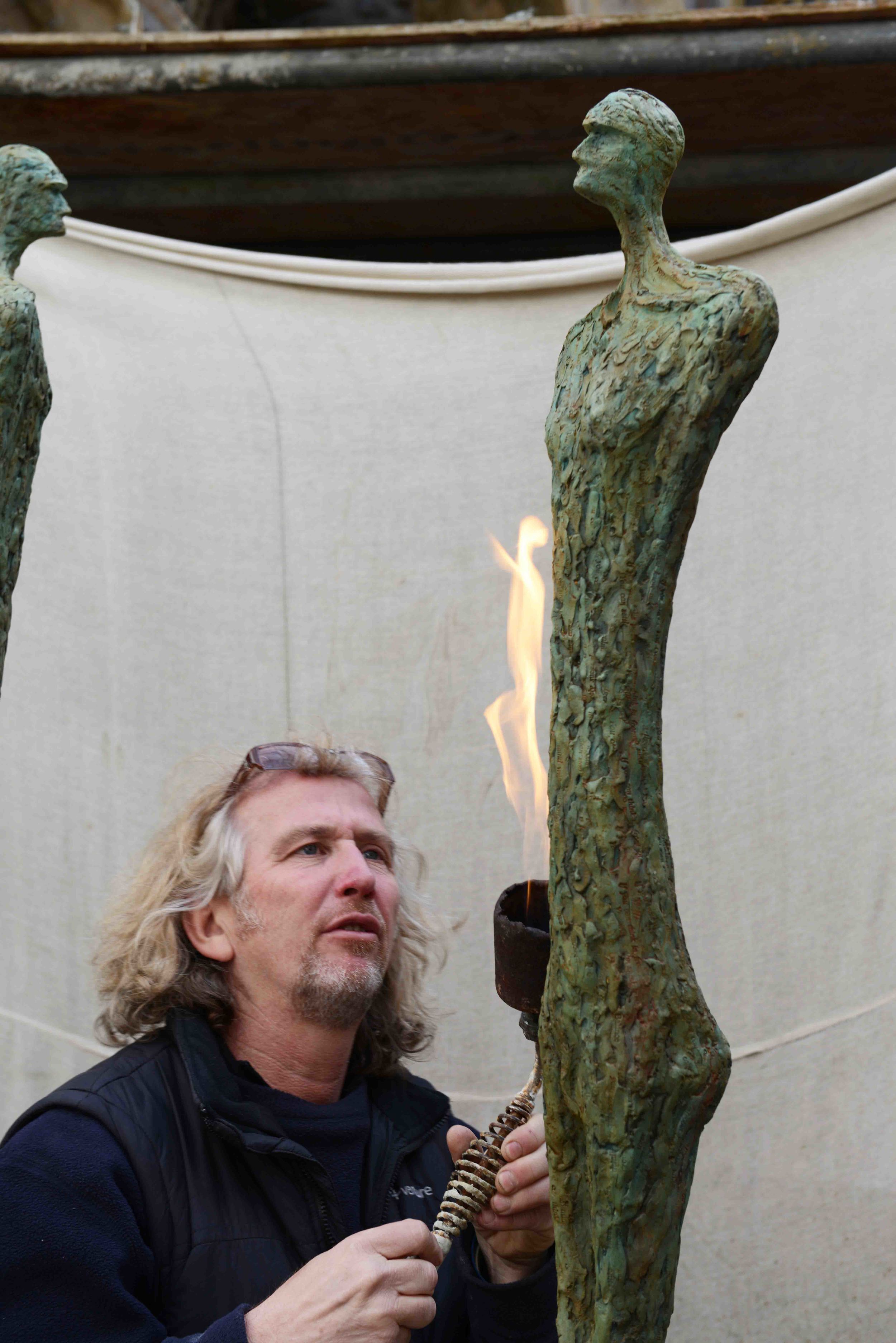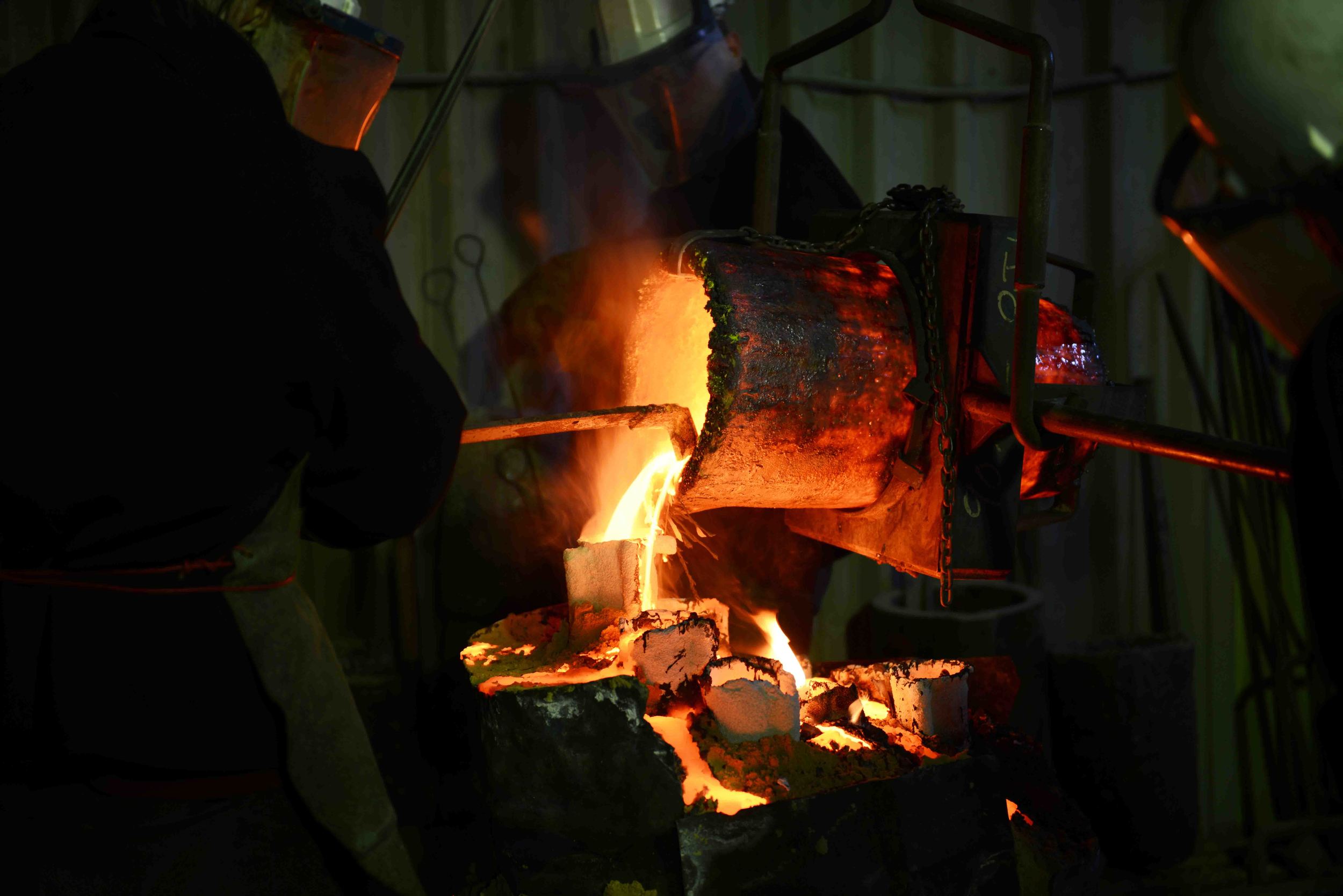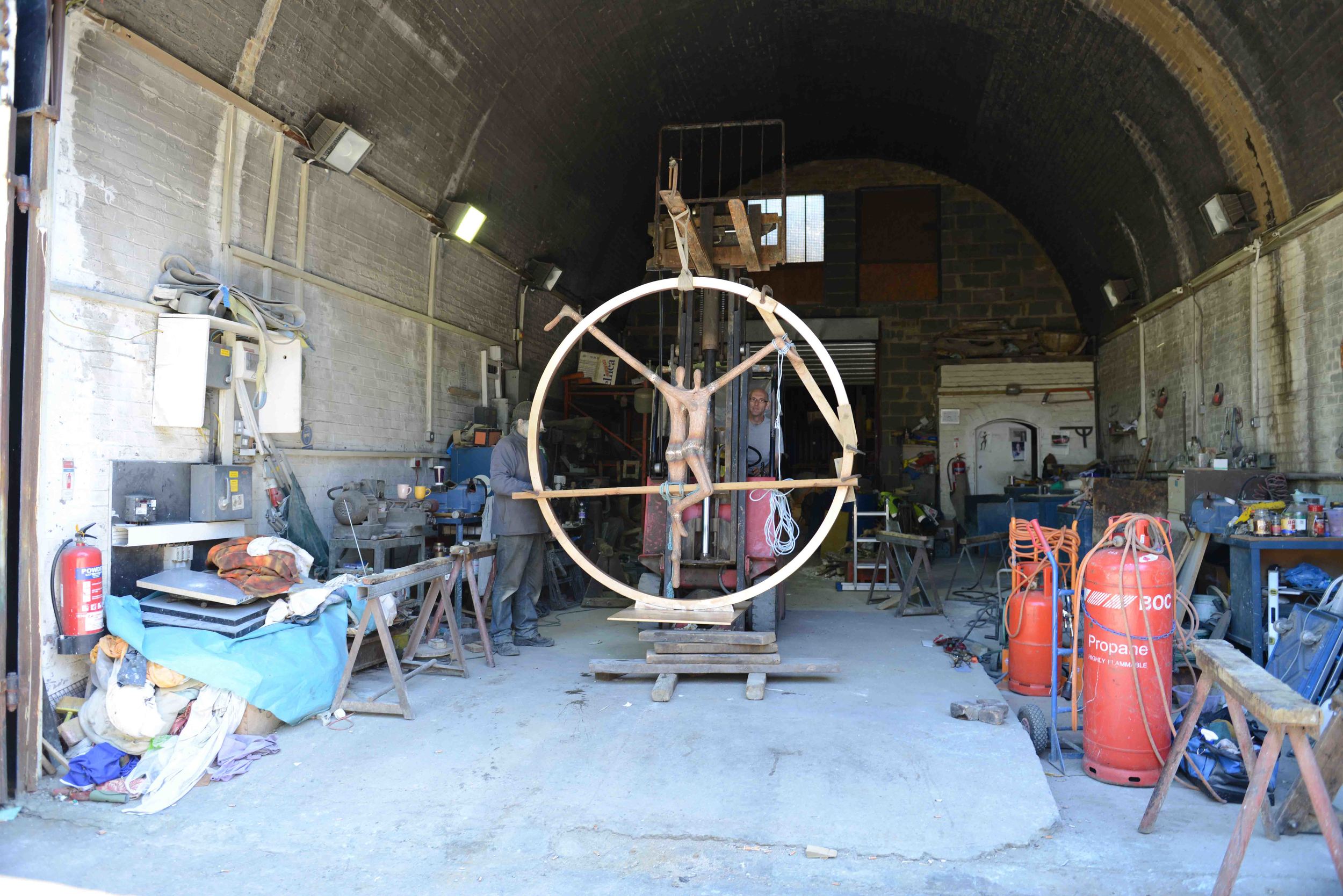Michael Speller
/Michael speller - harmony
If you are not already aware of the sculptor Michael Speller, things are about to change! Not only has he had his work featured at Chelsea Flower Show (as seen below) for several years, his work has also been commissioned worldwide and most notably in London a large sculpture of his is standing in front of the Milbank Tower. Mike is a very busy man, he attends the installation of all of his pieces from private commissions to public grand scale installations and he is currently working on a mammoth project which has been commissioned for the public in Greenwich later this year, read more further on.
The fluid human shapes created in bronze are awe inspiring. The figures are somehow elegant with their elongated shapes and while many are solitary there also many pieces which have two or more figures always managing to inspire balance and harmony with their clever composition.
Having been introduced to Michael Spellers work by the energetic and knowledgable manager, Rebecca Rogoff of The Clarendon Fine Art Gallery in Cobham, I managed to make contact with Mike himself to ask him a little more about his work. Please read on to learn more...
michael speller - chelsea
After a successful career in business, what inspired you to change direction and become a sculptor?
I had a ‘change in life’ moment 20 years ago when my wife Sarah was diagnosed with breast cancer. Thankfully she was treated successfully but that point in time raised the question about the meaning and purpose of our lives and was in a large way the reason that I embarked upon my new career as a sculptor.
Your works are all in bronze, what is it about this medium that you enjoy working with?
The first time I saw bronze being poured was at the Bronze Age Foundry under a railway arch in Limehouse. To see those artisans working in a darkened corner of the foundry was like peering back into Dickenson London or even Roman Britain. An amazingly earthy process that has changed little over hundreds of years. It was at that moment that I fell in love with the process of creating in bronze. The core of the format is timeless and the potential forms and colours of the material are limitless. It opens up a bottomless pot of opportunity that is only limited by your imagination.
What inspires you and the human figures you create?
I have come late to sculpture. I managed my own catering business for 16 years prior to embarking upon a career in the artistic arena. I think that this has worked to my advantage. I have already lived a life with it’s inevitable ups and downs and I believe that this translates into the sculpture I make.
My work using the human form attempts to find a rhythm in our lives whilst accepting our faults and frailties. Balance I believe does not come from plumb lines and tape measures, but reflecting and realizing our imperfection and idiosyncrasies and counter balancing them with our positive attributes in order to achieve a visual and spiritual equilibrium with ourselves and the world around us.
It would be fascinating if you could lead us through the steps you take to create your final pieces?
I do not tend to do sketches first unless it is a commission where I need to show others and present the concept. Usually I would have a clear vison in my head of where I want to go with an idea.
At the start of an original work I would firstly make an armature - the flexible skeleton upon which a modelling medium such as clay, plaster or ‘plasterseen’ can be supported.
Once the clay model is completed I make a silicon rubber mould which will be supported by a fiberglass resin jacket. This jacket supports the rubber in the correct position.
The mould and jacket is made in several sections and will create a negative image of the original sculpture, preserving all the detail that was modelled onto the clay.
The next stage of the process is to pour wax into each of the sections of the mould and eventually assemble these individual sections together to create the wax sculpture as originally made in clay.
The sculpture would then be divided into manageable sections and wax runners and a wax pouring cup will be inserted. This will eventually be the means by which the bronze will be poured into the sculpture.
In the form of a fine powder coating that is mixed in with a setting agent the wax will then be covered in a ceramic shell. Over a period of weeks many thin coats of ceramic will be added by this method until the shell is a strong enough to withstand the heat of molten bronze without cracking.
The sculpture is then put into a kiln upside down; the wax melts and pours out of the ceramic shell leaving a cavity into which the bronze can now be poured. The sculpture is then secured in firm sand and molton bronze canbe poured into the ceramic shell. Once cooled, the ceramic shell can be removed to reveal the bronze form.
Many weeks of work still lay ahead to bring the sculpture back to life. The sections of bronze have to be welded back together and the runners and pouring cup removed.
Once reassembled and the bronze has been repaired where necessary, the sculpture will be sand blasted to clean the surface, preparing it for the next stage which is the patina.
Patination, as in all parts of the process is a highly trained skill in itself. The process will achieve the colour of the bronze as desired by the artist. Normally several layers of chemicals will be applied. The bronze would usually be heated to allow the required colours to permeate the bronze.
Once I am happy with the patina finish the bronze will be coated with beeswax to preserve the colour and protect it from the elements. Finally, after a process that can often take three months or more, a quick polish of the surface and the sculpture is complete.
Some of your pieces are made of ‘Cold Cast Bronze’ and others of ‘Foundry Bronze’. What is the difference?
The difference between cold cast bronze and foundry bronze.
Cold Cast Bronze:-
Made from bronze suspended in resin and strengthened by fibreglass and stainless steel.
Cold cast is suitable for both inside and in most outdoor locations, but dependent on individual sculpture structures
Patination (ie colour finish) can be similar to foundry bronze in most cases.
With care cold cast bronze will last a life time.
Foundry Bronze:-
Hot poured bronze using the time-honoured traditional methods of sculpture.
Very strong – foundry bronze is suitable for both inside and outside locations.
Patination - choices of finish can be more subtle according to desired effect.
Will last not only for a life time but for generations to come.
What exciting new works or commissions can we look forward to seeing from you over the year ahead?
I am currently working on a large public art commission for central Greenwich that has been commissioned by Greenwich Hospital the Crown Charity that originally commissioned Sir Christopher Wren to build The Royal Naval College for retired Royal Navy Seamen. It is currently renovating Greenwich Market and the surrounding area. The sculpture will be the meeting point of the new development, and will provide a focus for the official opening in the spring.
The Clarendon Fine Art Gallery sells Michael Spellers work. Should you wish to discuss a commission or require further information please contact them directly, Rebecca or her team will be happy to assist cobham@clarendonfineart.com
If you live anywhere near Surrey, I strongly recommend you pop in to visit the Clarendon Fine Art Gallery in Cobham, last week they celebrated 6 months since their opening and as a result they currently have on their walls work from some of the great masters from the art world, from Pablo Picasso, Marc Chagall, L S Lowry to Henry Moore together with works from their exciting artists from the here and now. Including works from Michael Speller, Christian Hook and David Porteous-Butler.
The Clarendon Fine Art Gallery in Cobham (images go gallery below) is based on Oakdene parade and is often holding small events to showcase their artists work.
If you happen to be in Cobham because you live locally or because you have made a special trip to see the gallery and its works. Stop by Brontes for a little refreshment. This recently opened, health focussed cafe sells amazing coffee, juices and smoothies and the most delicious salads and inspiring naughty treats imaginable, such as honey, almond & lavender cakes and courgette and pistachio muffins, yum! I'm planning my next trip there again already! Wishing you all a happy weekend.
This is not a sponsored post.
Images have all been provided by Michael Speller and Clarendon Fine Art Gallery



